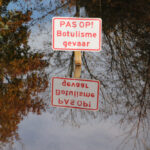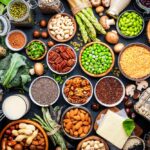Last week, the Netherlands Environmental Assessment Agency (PBL) presented its analysis of the Climate Agreement. Simultaneously, WUR researcher Theun Vellinga published a study into possible emission reductions in agriculture. Oene Oenema, professor of Sustainable Soil Use and reviewer of the PBL report, puts the studies into perspective.
Are the two studies related?
‘Yes. Vellinga calculated what agriculture could do to until 2050 to reduce the emissions of greenhouse gases such as methane, nitrous oxide and CO2. The PBL has assessed what reduction can realistically be achieved before 2030 using the measures proposed in the Climate Agreement. There are substantial differences. Vellinga indicates that until 2050, we could theoretically achieve a very large reduction within agriculture. The PBL expects that the reductions until 2030 will be minute due to insufficient stimuli.’
What causes this?
‘The cause is found in that during the past 20 years, following strict efficiency measures and manure policy, agriculture has already achieved an emissions reduction of around 30 percent. To achieve a further decrease, additional measures are required, which cost money. The parties that contributed to the Climate Agreement at the “climate tables” have set their hopes on financial stimuli: subsidies, incentives, funds. However, according to the PBL, the question is whether there are sufficient funds and whether these funds are sufficiently attractive to the farmers. One of the proposed measures is for farmers to store more organic matter – and therefore CO2 – in the soil. The PBL does not grant an emission reduction to this intention, as there is no financial stimulus to make this happen yet. Farmers will have to adjust their building plans to capture more organic matter. They will only do that if it pays off.’
The PBL states that the primary measure would the reduction of methane emissions. What is required to achieve this?
‘This concerns methane production from cattle and manure storage. It is possible to reduce cattle’s methane production through breeding – there is a genetic variation in the amount of methane they produce – and through adjustments of the feed. Methane production could perhaps be halved by combining the two, but it would take time. In the approach through manure, the separation of the cattle’s manure into faeces and urine is the most important measure, but one needs to adapt the shed for that. This is only worthwhile when building new sheds, so this measure is not expected to have much effect until 2030. Another option is to dump the liquid manure directly into a fermenter on the farm. This would be possible from one day to the next, but it would cost the farmer money, as manure fermentation on the farm is not profitable at the current energy prices. One would need subsidies for this. The third option is methane oxidation. The gas from the manure storage is passed through an oxidiser that converts the methane into CO2. This is technically already possible, but the oxidiser is not ready for application yet.’
Could agriculture also reduce the CO2 emissions by submerging the peat meadows?
‘Peat meadow areas are currently being drained for agricultural applications, causing the peat to oxidise and CO2 to volatilise. This can be reduced by not draining as deeply, but that would mean that only extensive farming remains a possibility in those places. Here too, the question remains: what does the farmer’s business model become? The climate tables hardly considered this measure. The PBL assumes that 25,000 hectares of peat meadows will be returned to a higher water level; that is about 10 percent of all peat pasture in the Netherlands.’
Would planting forests be a more effective measure?
‘A forest captures the most carbon, followed by grasslands and arable land. This means that shifts from arable land to grassland and forest do help. It is therefore beneficial when farmers plant fruit trees, walnuts and wooded banks. But once more, the question is: how does one generate income from this as a farmer?’
In summary?
‘To achieve the climate target, simply applying more of the same is no longer enough. Agriculture now needs to make bigger changes. Farmers will therefore have to adjust their building plan and/or business structure in certain areas. And a business model is required to do so.’

 Photo: Oene Oenema
Photo: Oene Oenema 

